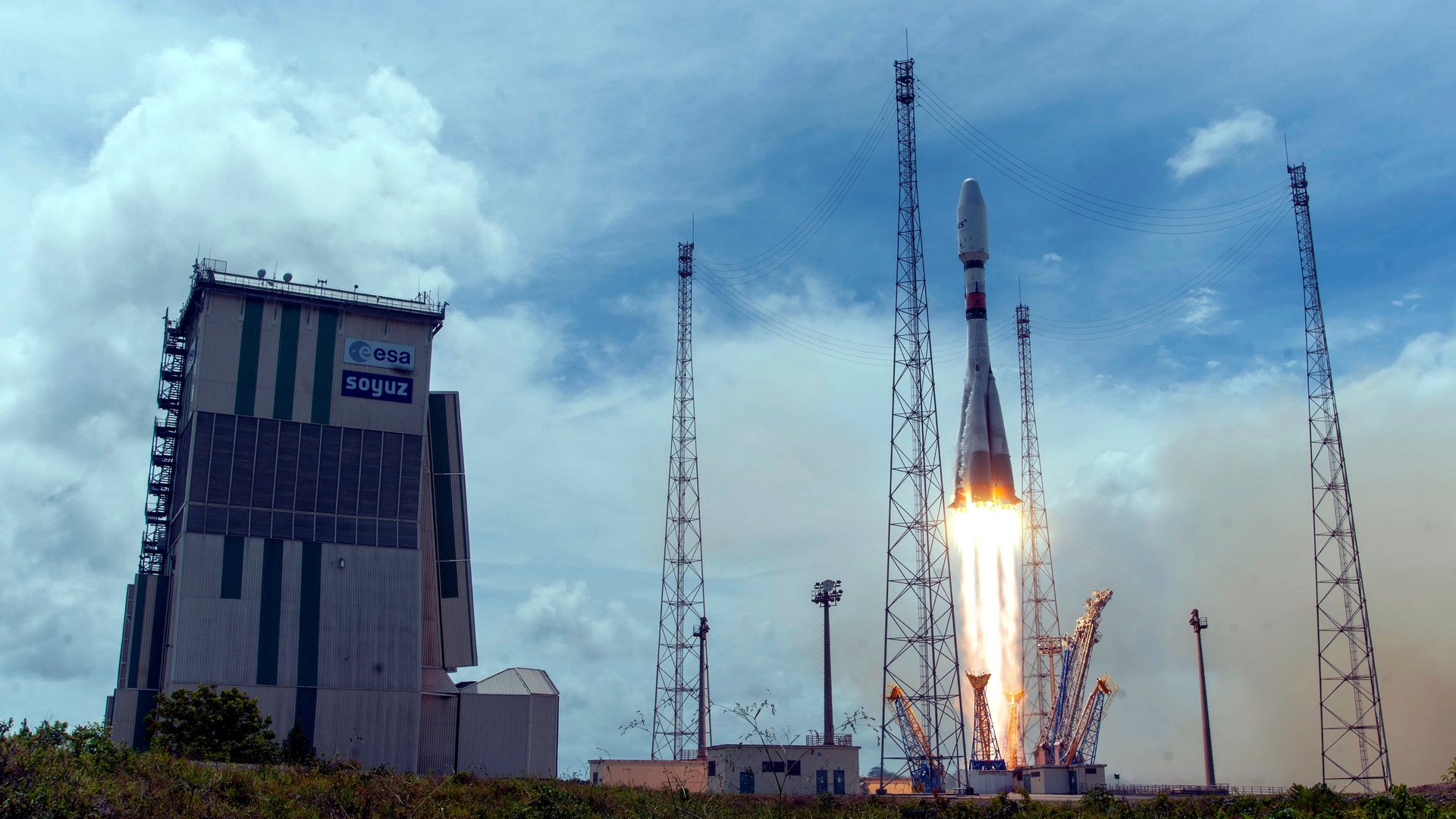This company made space internet safe for Jeff Bezos and Elon Musk
Amazon rarely gets into a new market that hasn’t already been tested by startups.


Amazon rarely gets into a new market that hasn’t already been tested by startups.
And when the company said today that it was planning to launch thousands of satellites to provide internet connectivity on earth, it wasn’t hard to see which company might have inspired the internet mogul.
SES Networks, the Luxembourg satellite giant, has been operating its O3b constellation, the term for a network of satellites, since 2016. It now comprises twenty communication satellites, the last four launched by the European rocket maker Arianespace from a spaceport in French Guiana on the same day Amazon made the announcement that it would enter the same, well, space.
O3b stands for “Other Three Billion,” a reference to the unconnected global population the company targeted when it was founded by entrepreneur Greg Wyler in 2007, and backed by SES, Google, and other investors.
Most communications satellites are large and operate from super high orbits called “geo-stationary” because spacecraft at that height move at thee same speed as the earth’s rotation, hanging over a single spot. O3b pioneered the use of satellites in “NGSO”—non-geostationary orbit—to provide the same service with less lag by flying at altitudes considered medium-earth orbits—around 4,970 miles (8,000 km) rather than three times as high.
The first of Wyler’s satellites launched in 2013, and by 2016, he had sold the entire company to SES. The technological and business success of O3b proved that satellites could compete with ground-based fiber optics in providing the infrastructure for global networks.
“We have seen ourselves as trailblazing,” John-Paul Hemingway, the CEO of SES Networks, tells Quartz of O3b, which he joined prior to its acquisition by the larger company. The startup had to prove the ability to purchase more than a dozen low-cost satellites at a time when most spacecraft are expensive unique designs and develop technology for users on the ground to connect to several moving satellites rather than just one.
Wyler, after leaving O3b, went on to partner briefly with Google and Elon Musk’s SpaceX before creating his own company, OneWeb, to launch a far more ambitious version of the NGSO approach, with thousands of even smaller internet satellites flying hundreds of miles above the planet in low-earth orbit. SpaceX is developing a similar network called Starlink, while other competitors include the Canadian firm Teledesic, Boeing, and now Amazon.
Rather than following these potential competitors in launching larger constellations closer to earth, SES plans to expand the O3b network with other satellites in medium-earth orbit. They won’t have the same proximity advantage, but Hemingway says his satellites are located in the sweet spot for capability and cost-effectiveness.
“We’ve explicitly chosen not to go to low-earth orbit [to avoid] the complexity of the networks that you build, the technology cycle to launch these many hundreds or thousands of satellites,” Hemingway says.
Like O3b, Amazon’s early public presentation has focused on providing internet access to underserved communities. But the reality of the communications market means that companies like O3b spend as much time working with militaries as they do civilian telecommunication providers, as well as more prosaic customers like cruise ships. The latter has become a major source of revenue for O3b, which earned more than €800 million ($897 million) last year.
Hemingway, who spoke to Quartz before Amazon’s announcement, says the company’s goal is to mainstream satellite communications ahead of the global adoption of 5G, arguing that “investing in software and intelligence to really replicate and leapfrog terrestrial networks is where our industry needs to go to.”
Now they know one of the leaders in software and intelligence is right behind them.